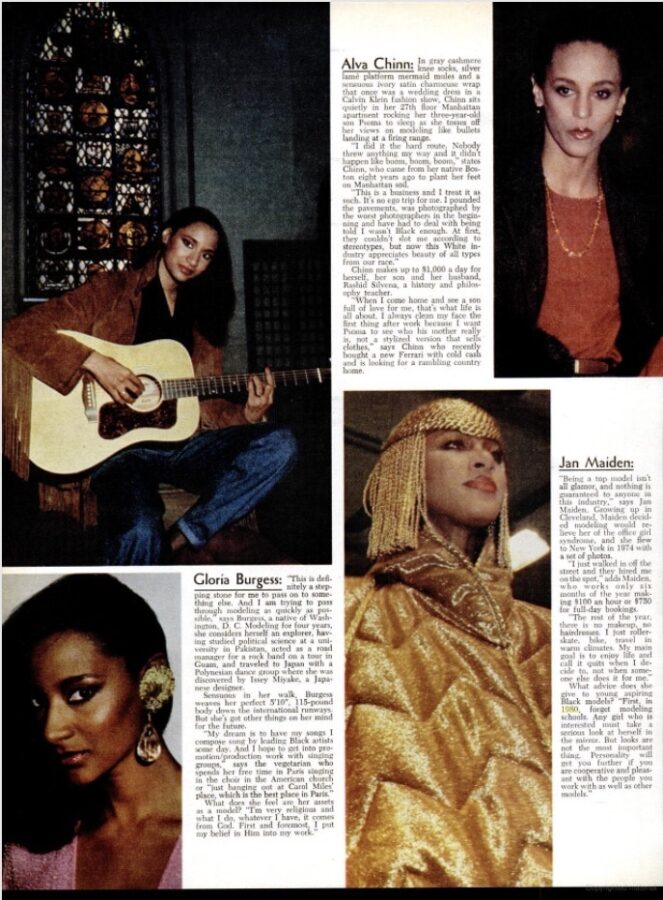André Leon Talley defined fashion in a manner that no one else could. His enthusiasm not only emanated through his retelling of a unique runway show but with his innate sense of elegance. In a landscape not made to reflect his excellence, Talley found and cultivated outlets for diverse expressions of fashion. Unapologetic in his purpose, EBONY was privileged to have had Mr. Talley mark his place in our history, even if for a short time, as a fashion editor for our publication in the early 80's.
As recalled in his last book The Chiffon Trenches, Talley's relationship with Eunice Johnson and his time at EBONY was a safe haven. It was Mrs. Johnson's call to him that encouraged him to work for Johnson Publications under the EBONY helm. After experiencing intensely overt racism and discrimination from his days at WWD and W, where he worked prior to his tenure at EBONY, he expressed how he was happy to work at a publication that openly welcomed him and made him feel him like family.
"My family did not read WWD at all, nor would they even have known where to purchase that publication. But they all subscribed to and read the monthly EBONY and JET, a weekly publication that addressed the Black community on a nationally basis. Finally, I had a job that would make my entire church family and all of my aunts and cousins proud," he wrote in the memoir.
Even after his time at the venerable Black magazine, ALT continued a close and sincere relationship with Mrs. Johnson as they both shared a connection to navigating the world of fashion as Black people.
In light of his passing, we reflect on his magnificent brilliance that has shined through in the pieces he wrote for us.
July 1980





The essence of design is integral within our community. Across varying industries, we have a knack for curating and reconfiguring alternatives to what is perceived as being "the norm." This is especially true in the world of fashion.
Through detailing the artistic inspiration of Black fashion designers, André Leon Talley simultaneously illuminated their similar struggles as well. From paying their dues to highlighting the lack of resources available to the designers, Talley's inclusion of them in EBONY showed levels of care and consideration that they did not receive from white, mainstream publications. Their goals and dreams were just as important as those of their white counterparts and through his work, ALT set the tone to confirm this as fact.
Today, we are able to see and widely uplift the work and achievements of Black designers such as the late Virgil Abloh, Kerby Jean-Raymond of Pyer Moss, Olivier Rousteing of Balmain, , and Anifa Mvuemba of Hanifa, across a multitude of publications and mediums. This is largely due to the visionary efforts of Mr. Talley.
November 1980







Black bodies have laid the blueprint for style, beauty and innovation for centuries.
However, it's no secret that Black fashion models have, historically, and continue to be subjected to a great deal of scrutiny and colorism in the world of fashion. Because of this, there was frequently a lack of visibility when it came to seeing Black models within the seams of mainstream print publications.
"Black models have become the perfect expression and image of elegant fantasy, modern dignity, and the new freedom and confidence all Black women have gained over the past ten years."
In this piece, the Godfather of Fashion explored the timeline of increased demand of Black models. After quoting a statement from Oscar de la Renta about the "original sense of style" of Black girls, Talley went on to give flowers to Black models such as his close friend Pat Cleveland, Beverly Johnson, Iman, Mounia and Peggy Dillard. By loving on these Black women, he encouraged the culture of Black people seeing themselves represented and validated in spaces of luxury and glamour despite society's opinions of Black folks at the time.













